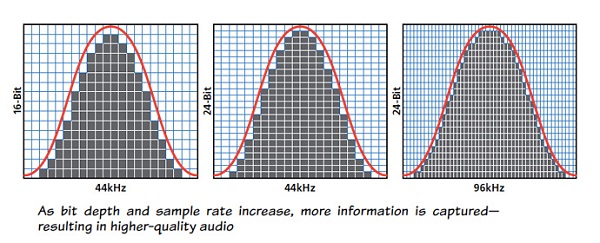
- #256 VS 320 KBPS 320KBPS#
- #256 VS 320 KBPS ANDROID#
- #256 VS 320 KBPS BLUETOOTH#
- #256 VS 320 KBPS FREE#
First and foremost, aptX is developed by Qualcomm.
#256 VS 320 KBPS BLUETOOTH#
Speaking of aptX, this is the next logical Bluetooth codec that is supported on devices and it comes in several different flavors. The only exception is the Mac, which supports aptX. Everything purchased or streamed via iTunes or Apple Music is encoded over AAC. Theoretically, this is why Apple only supports SBC and AAC on its devices. In theory, anything encoded with AAC will sound the same whether it be via Bluetooth or over the wire. This means that wireless audio doesn’t get “compressed” over the air. On the flip side, having AAC as a Bluetooth codec means audio encoded using AAC, whether it be MP3, M4A, or ALAC, won’t need to be compressed when sending the audio from your device to the headphones. For the bad: it’s not an open standard, and manufacturers have to pay for the license.
#256 VS 320 KBPS ANDROID#
This codec is commonly found in Apple devices, with Android recently supporting the codec in later versions of the operating system.ĪAC has essentially become the standard for Bluetooth audio. Next is advanced audio coding, better known as AAC. Nowadays, every Bluetooth audio device has support for SBC as a backup, with certain devices only supporting SBC.
#256 VS 320 KBPS FREE#
SBC is free for manufacturers to use and was the very first audio codec to get certified for Bluetooth. However, manufacturers typically set a maximum bitrate of 345 Kbps. While it typically has a bad reputation for being the worst compression method, SBC actually doesn’t have any bitrate limitations. Some codecs allow for lossy, and others allow for completely lossless audio streaming.Īt the baseline, every set of Bluetooth headphones (or speakers) uses the low-complexity subband codec, better known as SBC. There’s a common misconception that Bluetooth audio will never be good as wired due to its compression methods, however this is not true. This is important as Bluetooth audio compression varies by codec. Typically, you won’t find lossless files unless you rip from a CD, are specifically looking for it, or are streaming via TIDAL. The reason why it’s controversial is that some audio enthusiasts argue that they can hear the difference in audio quality, contradicting the popular opinion that lossy compression is fine for most people. By definition, lossless audio means that nothing is lost and all artifacts and details are retained from the original recording. Lossless is defined as an audio file that typically has a bitrate higher than 500Kbps and comes in a variety of formats such as FLAC, WAV, or ALAC. Lossless is where things gets slightly controversial.
#256 VS 320 KBPS 320KBPS#
For example, OGG 320Kbps is used on Spotify and 256Kbps M4A is used with Apple Music and the iTunes Store. In terms of lossy compression, the format and bitrate don’t really matter as long as it lands between 256 or 320. This form of compression has a bitrate somewhere between 256Kbps and 320Kbps in various formats (OGG, MP3, M4A, for example). Lossy is what most music streaming services use. Next are the murky waters of lossless versus lossy which, despite sounding the same, are two completely different methods of compression. Modern compression algorithms are typically really good at this and remove frequencies that are inaudible to the majority of humans. Compression is an algorithm in which certain audio frequencies get removed (compressed) to reduce file size. Learn more about that here.įirst, let’s talk about compression. Earlier this year we broke down Bluetooth 5.0 and its role in pushing the wireless revolution forward.

Specifically, the different Bluetooth audio codecs and why they play an important role in the future of audio.

Years later, the company continues removing the jack in more devices such as iPad Pro. However, the company had already noted its vision well before the iPhone 7 with the original Apple Watch. With the removal of the headphone jack with iPhone 7, the company made it clear that the future of audio is wireless. Apple did its part in moving the world to wireless headphones.


 0 kommentar(er)
0 kommentar(er)
